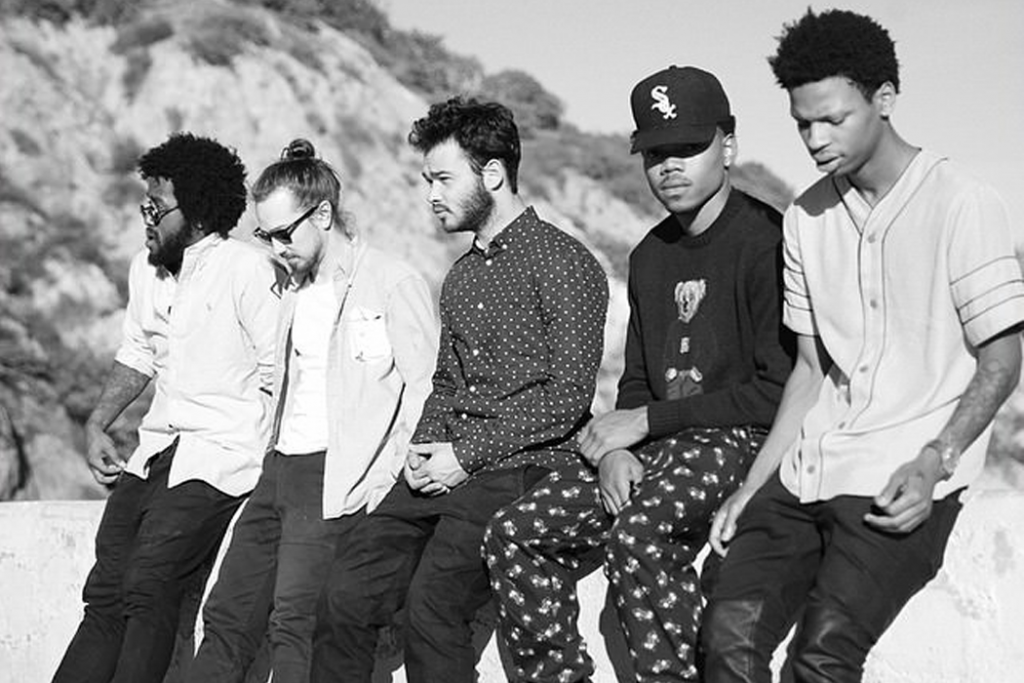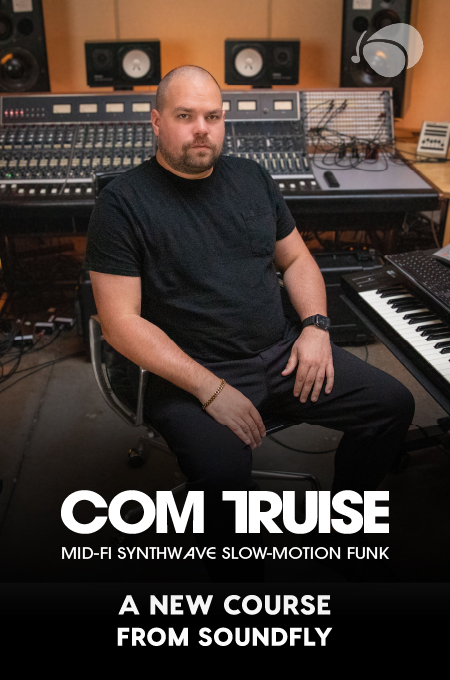+ Harness your inner groove and your outer authenticity with drummer, producer, and artist The Pocket Queen. Check out her course on Soundfly.
Rappers used to say, “The real backbone of hip-hop is disc jocks.”
Nowadays, though, the real backbone of hip-hop is ostensibly the virtuosic studio musicians dominating the most heralded releases of the past few years. In leaving their indelible marks on records by award-winning artists like Chance The Rapper and Kendrick Lamar, instrumentalists like Nico Segal (a.k.a. Donnie Trumpet), Robert Glasper, and Stephen Bruner (a.k.a. Thundercat) have helped change the way rap songs get made.
They’ve not only made some truly incredible music but also managed to broaden their artistic peer communities and make them more welcoming for any unique musical voice that wants to be heard.
It may be a surprise to some that back in the 1970s, hip-hop performances only ever occurred in completely live, impromptu settings with either a DJ’s turntables or a standard band of instrumentalists laying down a groove to accompany lyricists. In fact, the uncut, 15-minute version of 1979’s “Rapper’s Delight,” the crossover harbinger of rap’s eventual domination of the mainstream, was underpinned by the live bass playing of 17-year old Chip Shearin.
Earning $70 to contribute to the first rap hit ever by continuously replaying the bass line from Chic’s “Good Times,” Shearin admitted that “the drummer and I were sweating bullets because that’s a long time… And this was in the days before samplers and drum machines when real humans had to play things.”
Some artists, in fact, didn’t even think rap could be recorded and put on wax. According to Oliver Wang, “Studio owner, Sylvia Robinson had trouble finding anyone willing to record a rap song. Most of the rappers who performed in clubs did not want to record, as many practitioners believed the style was for live performances only.”
Robinson might have been shocked to find out that in 1996, hip-hop artist DJ Shadow would be credited by the Guinness Book of World Records with the first completely sampled album, Endtroducing.
Between 1979 and 1996, the hip-hop genre had undergone a virtually complete reversal in how the music was created and transmitted, from only live instruments at concerts to only sampled sounds on a recorded record.
Today, rather than reversing itself again, rap has landed somewhere in between. Did the growing popularity and cultural limelight of the Roots have something to do with this? Who knows. The only conclusion from the recent high-profile production collaborations between Thundercat and Kendrick Lamar, Nico Segal and Chance The Rapper, and so much hybrid instrumental/electronically produced hip-hop music is that this trend has really grown in the last couple of years.
Listen to Segal’s contributions to the opening song from Chance’s Grammy-winning album Coloring Book, “All We Got.” A lot of the brilliant emotional trajectory of this track would not be possible in a purely electronic context.
Rather than start us off with the kind of blistering lyrical performance Chance is capable of, this record sets the stage for the rap to come with the unmistakable, bluesy wails of a layered Nico Segal horn take. By bending his notes and flutter-tonguing other passages, Segal, not Chance, is first to welcome listeners to the following musical experience.
It is, indeed, the perfect bite to whet the audience’s appetite for the album’s gospel-infused themes in both music and lyric. Even the titles of ensuing songs like “Angels” and “Blessings” pinpoint where Chance’s artistic focus predominantly lies.

Or consider, for example, Thundercat’s work on Kendrick Lamar’s To Pimp A Butterfly album. Once more, it isn’t even Lamar who launches the album with “Wesley’s Theory” but the music of a handful of “backup session musicians.” Surely, a more befitting title is needed for artists like Segal, Thundercat, and, in this case, the legendary George Clinton.
Thundercat himself shows up in the writing credits on no less than a full third of To Pimp A Butterfly.
These musicians’ newfound clout and the global platform is underscored because, rather than these projects merely serving as survival work, all of these artists actually have their own acclaimed solo releases. Segal and Thundercat have carved out sizeable international audiences for themselves and positioned themselves as centerpieces of a fast-growing, like-minded community of musicians and composers attempting to rethink the future of hip-hop through collaboration.
Thundercat just released a project entitled Drunk, which features everyone from Wiz Khalifa to Kenny Loggins, as well as his old pal Kendrick Lamar, and has been touring the world non-stop since its release.
Nico Segal, meanwhile, released Surf in 2015 with the support of hip-hop collective the Social Experiment, of which Chance The Rapper is a member. No official list of guest artists on this project was ever released, but cameos included J. Cole, Big Sean, Erykah Badu, and others.
Additionally, both of these albums have received highly positive reviews by the press.
Of course, the fame of traditional instrumentalists within rap in itself isn’t brand new or anything; bandleader George Clinton has supported everyone from Dr. Dre to Tupac Shakur to, yes, Kendrick Lamar in the name of crafting great music that grooves. Consider also the widely acclaimed use of live instrumentation alongside programmed electronic drums like the Roland TR-808 on OutKast’s 1992 album Southernplayalisticadillacmuzik.
What is new, though, is the fact that, thanks to the infrastructure of the modern rap industry, a greater number of instrumentalists who, years ago, would’ve been forced into the shadows of finances, credit, and audience influence now have the opportunity to make those choices for themselves — and their music is just so freaking excitingly innovative.
Keep on Grooving…
Continue your learning with hundreds of lessons on songwriting, mixing, recording and production, composing, beat making, and more on Soundfly, with artist-led courses by Kimbra, Com Truise, Jlin, Kiefer, RJD2, and our new The Pocket Queen: Moving at Your Own Tempo.




